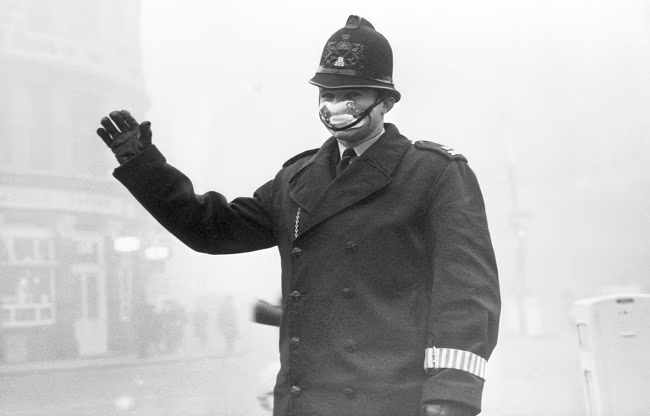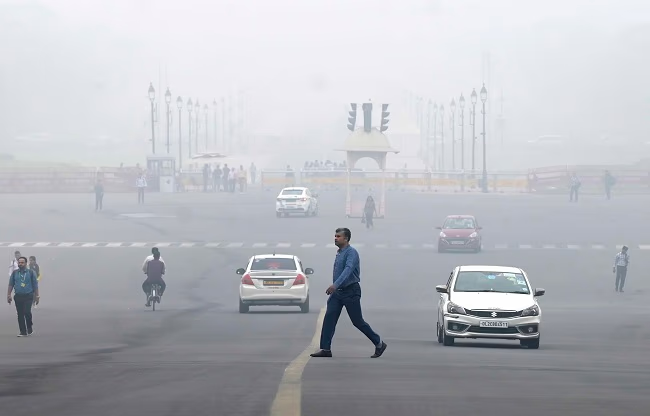For the past few days, Delhi has been veiled under a dense blanket of smog. Almost every locality's AQI has surpassed dangerous levels. This raises the question: why does air pollution become life-threatening primarily in winter? This isn't just the case in India; it's a global phenomenon. The Great Smog of London was the first severe incident to bring this issue to light.
Air pollution in London had started showing effects as early as the 19th century when the authorities would intermediately restrict coal burning. However, it was an incident in the 20th century that served as a grim lesson for Britain and many other countries. On December 5, a thick darkness began to cloak London, and very soon, the surrounding areas fell under its shadow. People returning from work lost their way in the chaos.
The visibility was so poor that individuals couldn't even see their feet. Many abandoned their cars and began to walk, lost in the unfamiliar dark. Although the cold claimed some lives, the smog was the greatest peril.
As the smog persisted for four to five days, people started falling ill. Hospitals were swamped with people suffering from breathing difficulties, fever, and vomiting. Unprepared for such an emergency, hospitals began turning them away. It's estimated that over those few days, more than 12,000 lives were lost due to respiratory issues.

Source: aajtak
What Caused the Smog?
During the chilly British winter, homes were kept warm with extensive coal use, and coal-powered factories also contributed to the haze. While the smoke was already problematic, the smog was exacerbated on December 5 when an anticyclone formed over London. This weather pattern, characterized by clear skies, traps cold air below while warm air accumulates above, akin to capping a bottle, retaining air and pollutants beneath it. In London, burning coal, unable to rise, formed the dense, lethal layer of smog.
What Changes Followed?
In the aftermath of this disaster, the British government promptly enacted the Clean Air Act, curbing coal burning in homes and industries and implementing additional measures to prevent future smog events. However, a similar incident recurred a decade later, dubbed the Great Smog of 1962, though stricter regulations limited fatalities to a thousand.

Source: aajtak
Whether it's London or other parts of the world, or Delhi-NCR, the presence of smog is notably constant in winter. Why is this so, and why does the northern region of the country suffer more compared to other areas?
In North India, post-monsoon months see a surge in pollution, primarily due to winter inversion. Typically, as we ascend, temperatures drop, but in winter, the upper air is warm while the lower air remains cold, trapping smoke, dust, and gases below instead of allowing them to rise. This stagnation manifests as smog.
Yet, this raises another question: if this pattern recurs every winter globally, why does Delhi-NCR emerge as a particularly severe case?
Cities by the sea, like Mumbai or Kerala, benefit from sea breezes and humidity that help disperse pollutants. In contrast, the northern plains, encompassing Punjab, Delhi, Uttar Pradesh, Bihar, and West Bengal, function as a basin where polluted air settles and can't escape, intensifying visible pollution during winter.
Even during summer, despite the presence of vehicles and industries, air pollution decreases as the sun's heat warms the air, allowing dust and smoke to rise and disperse into the atmosphere. This process could equally happen in winter under warmer daytime conditions.




